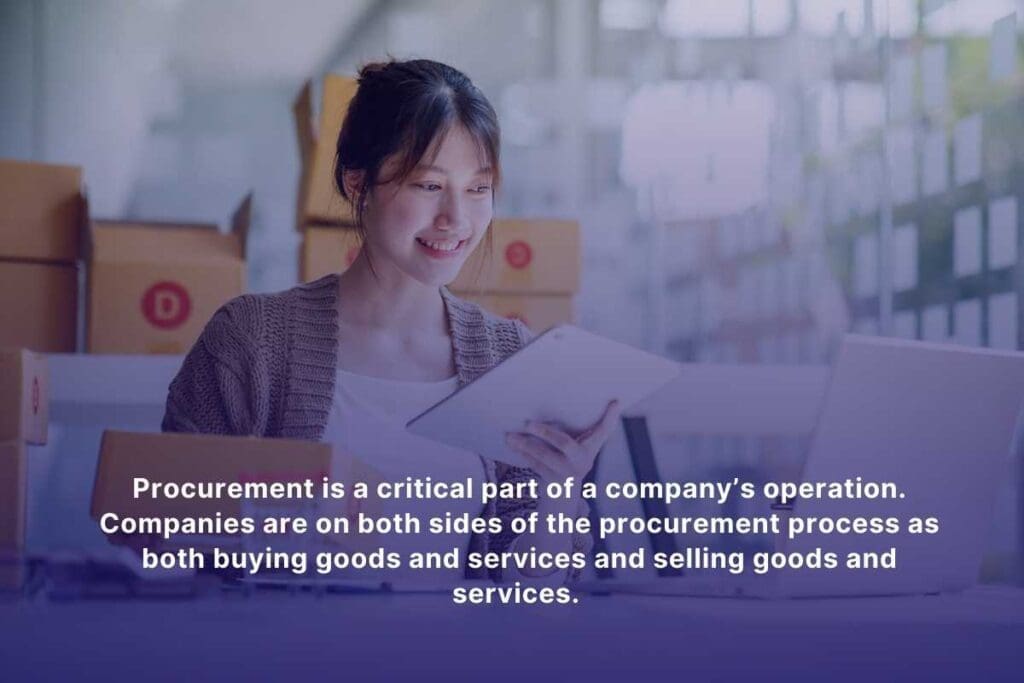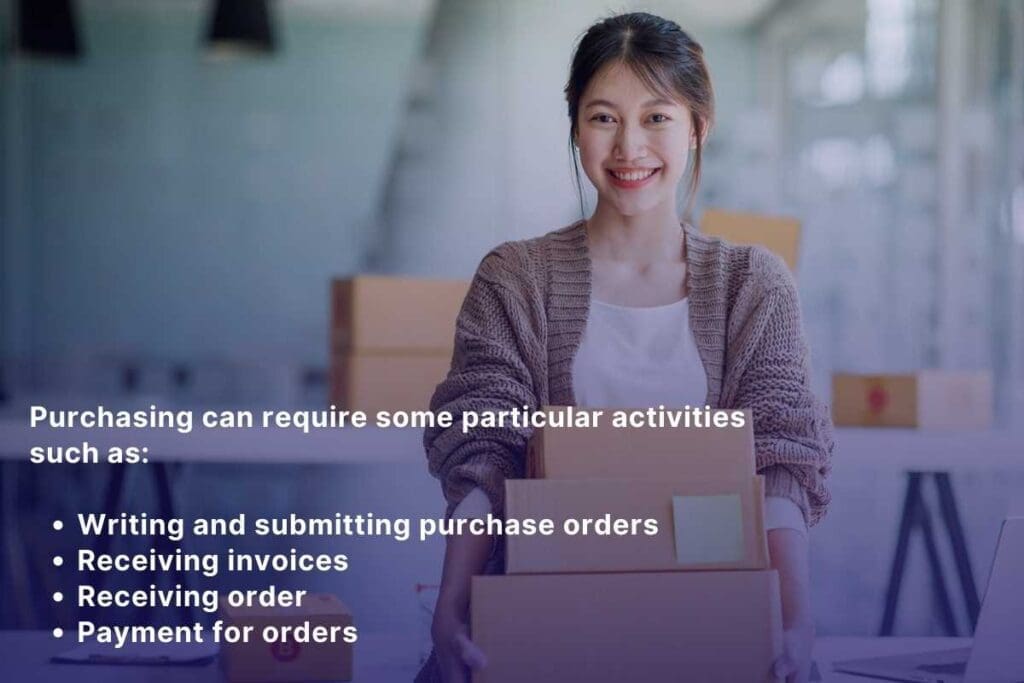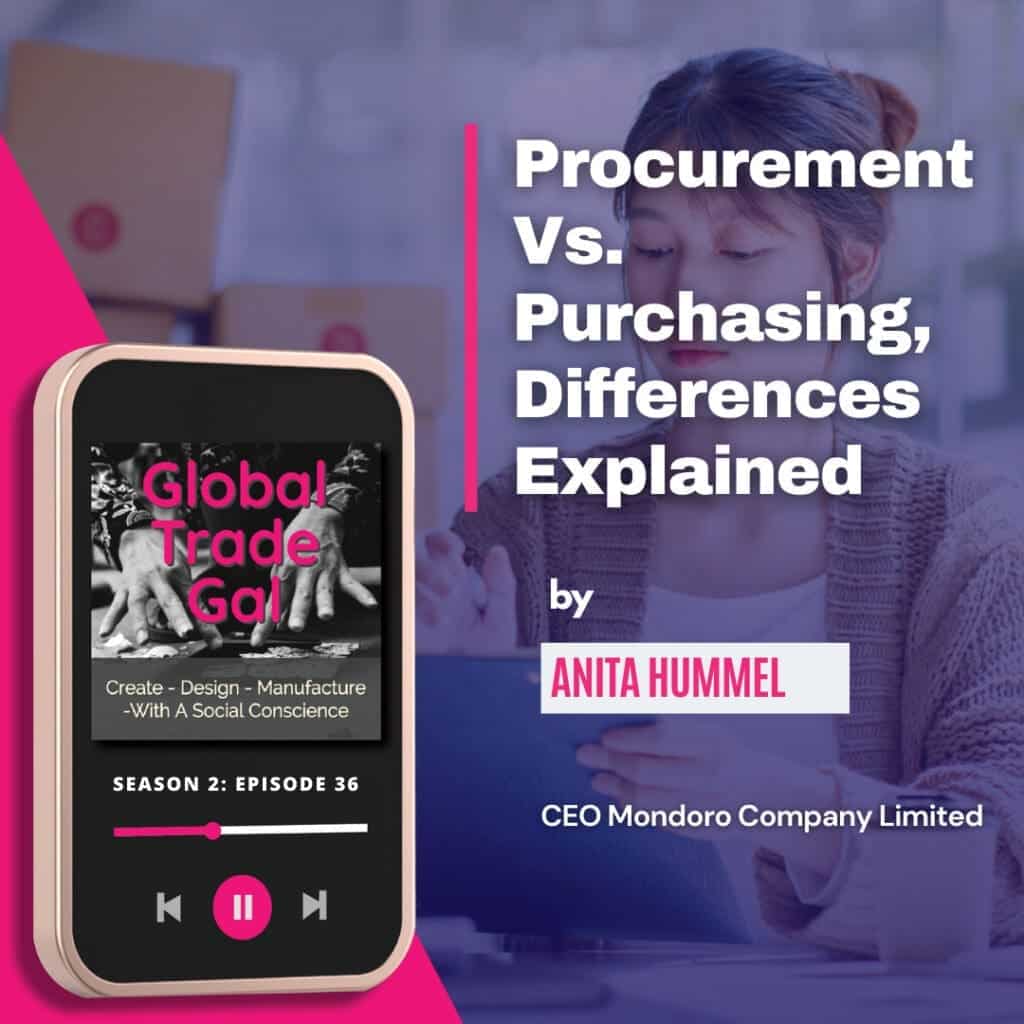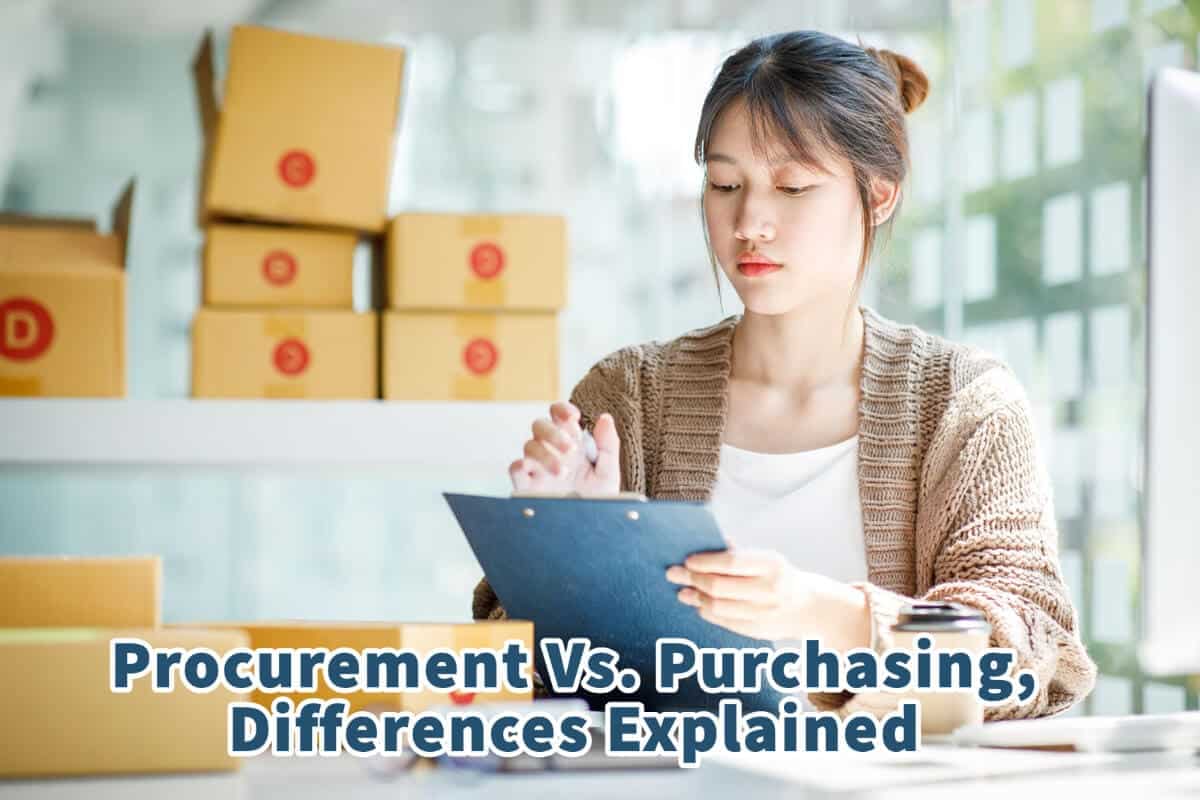When you are part of the Global Supply Chain, there are many terms you need to understand. One of these terms is procurement and purchasing.
Procurement is the strategic process of buying goods and services; procurement involves carefully analyzing all the data in the purchasing decision. Purchasing is part of the procurement process of actually purchasing goods and services.
Table of Contents
- What Is Procurement In The Global Supply Chain?
- What Is Purchasing In The Global Supply Chain?
- Frequently Asked Questions
- Related Content
What Is Procurement In The Global Supply Chain?
In the Global Supply Chain, procurement is the strategic process of buying goods. Procurement involves a careful analysis of internal and external data to make sure you make the best decision possible.
Procurement is the long-term strategy for global sourcing, acquiring materials and services from an outside party.
The procurement plan usually entitles the following:
- Relationships – Procurements are about a company establishing and maintaining relationships with vendors that can deliver the products at the price, quality, and quantity that they desire.
- Acquire – The goal of the procurement department is to acquire everything that a business needs to operate at a profit or to buy products at a fair price.
Procurement is about obtaining and purchasing goods and services, usually for business purposes. Procurement is generally associated with business as it is a business that needs to get services and goods, usually on a larger scale.

Procurement is a critical part of a company’s operation. Companies are on both sides of the procurement process as both buying goods and services and selling goods and services.
Types Of Procurement Explained
Two types of procurement focus on different kinds of needs. The two types are direct and indirect.
Each of them is as follows:
- Direct Procurement – Direct procurement focuses on acquiring the products or services a business needs to produce its goods; this includes things such as raw materials. For example, a direct procurement for a furniture manufacturer would be wood, glue, nails and everything else needed to produce furniture.
- Indirect Procurements – Indirect procurement focuses on products and services needed for non-production operations, such as office equipment or computers. Indirect includes everything you need to buy to help facilitate business activities and functions.
One of the main aspects of procurement is that it is a planned expense that helps facilitate the company’s operations in some ways.
What Is Purchasing In The Global Supply Chain?
Purchasing is part of the procurement process. Purchasing relates to all the transactional activities between your organizations and vendors.

Purchasing can require some particular activities such as:
- Writing and submitting purchase orders
- Receiving invoices
- Receiving orders
- Payment for orders
The primary focus for procurement and purchasing is to acquire specific goods and services in the particular quality, quantity, and time you need.

Listen To Our Podcast Procurement Vs. Purchasing, Differences Explained below or by clicking here.
Steps In The Purchasing Process
In the purchasing process, basic steps usually take place when purchasing goods and services. A purchase involves acquiring goods and services in exchange for payment. A purchase that is barter or non-cash transaction is also considered a purchase.
Purchasing is under the procurement process, but it is about the basic steps for purchasing include the following:
- Purchase Requisitions – A purchase requisition is usually an internal document used by an employee to purchase goods and services on behalf of the firm. These purchases are generally for business operations such as computers, office supplies, or manufacturing.
- Purchase Orders – A purchase order is written authorization from a buyer to acquire goods and services. The purchase order is a legal purchasing document that authorizes the supplier to deliver to the buyer at the required price, quality, quantity, and time. The purchase order becomes legally binding after the supplier counter-signs it.
- Invoicing – Invoicing is a document that itemizes and records the transaction between a buyer and seller. If goods are purchased on credit, the invoice will specify the terms of the detail and give information on the payment method.
- Payment – Payment is transferring money, goods, or services as agreed upon by two parties. The exchange of money can be made in the form of cash, check, wire transfer, credit card, debit card, or even cryptocurrency.
- Receipt – A receipt is an official record representing proof of a financial transaction or purchase. Receipts are issued in business-to-business dealings in the global supply chain. Receipts in accounting are usually necessary for tax purposes as proof of an expense.
- Quality Assurance – Quality assurance is when a business ensures that the product quality or what they are purchasing is up to the correct quality.
Procurement and purchasing are two essential parts of any company’s operations as they are transactions that involve money plus goods and services. Anyone in business or in the global supply chain needs to understand the difference between procurement and purchasing.
Find out more about how Mondoro can help you create, develop, and manufacture excellent home decor and furniture products – don’t hesitate to contact me, Anita. Check out my email by clicking here or become a part of our community and join our newsletter by clicking here.
Mondoro gives out a FREE Lookbook to anyone interested. You can receive a copy of our latest Lookbook by clicking here.
Listen to our Podcast called Global Trade Gal. You can find it on all major podcast platforms. Try out to listen to one of our podcasts by clicking here.
Subscribe to our Mondoro Company Limited YouTube Channel filled with great videos and information by clicking here.
Frequently Asked Questions
What is the fundamental difference between Procurement and Purchasing?
Procurement is the strategic process that involves planning, analysis, and decision-making for acquiring goods and services. Purchasing, on the other hand, is the transactional aspect of obtaining those goods and services.
How does Procurement contribute to the overall business strategy?
Procurement aligns with the organization’s strategic goals by considering factors like cost, quality, and risk management. It ensures that purchases support long-term objectives and add value to the business.
What is the primary focus of Purchasing within the supply chain?
Purchasing focuses on the execution of procurement plans, involving activities like order placement, negotiation, and supplier management. It deals with the day-to-day transactions to fulfill the organization’s needs.
Can one exist without the other in a supply chain?
While they are distinct processes, procurement and purchasing are interdependent. Procurement sets the strategic direction, and purchasing executes the plan. Both are essential for an effective supply chain.
How does Procurement differ in terms of decision-making compared to Purchasing?
Procurement involves strategic decisions such as selecting suppliers, negotiating contracts, and evaluating long-term value. Purchasing, however, focuses on tactical decisions related to order quantities, delivery schedules, and supplier performance.
What role does data analysis play in the Procurement process?
Data analysis is crucial in procurement for informed decision-making. It includes market research, supplier performance metrics, and risk assessment, helping organizations make strategic choices that align with business objectives.
Is Purchasing solely transactional?
Yes, purchasing is primarily transactional, involving activities like order placement, invoice processing, and ensuring timely delivery. It is the operational aspect of acquiring goods and services.
How does Procurement contribute to cost savings?
Procurement contributes to cost savings through strategic negotiations, bulk purchasing, and selecting suppliers based on long-term value. It considers total cost of ownership, including factors like maintenance and quality.
Can Procurement and Purchasing be managed by the same department?
While they can be managed by the same department, it’s important to recognize the distinction between strategic (procurement) and operational (purchasing) aspects. Some organizations separate them to ensure a clear focus on both aspects.
How do Procurement and Purchasing collaborate to enhance supply chain efficiency?
Procurement and Purchasing collaborate by ensuring that strategic goals align with day-to-day operations. Effective communication and information flow between these functions enhance overall supply chain efficiency, leading to better outcomes for the organization.
Related Content
Supply Chain Differences: Product Sourcing vs. Product Procurement
Product sourcing is obtaining or purchasing a product for your supply chain needs. Product procurement is the process put in place for the entire product, such as sourcing, purchasing, and delivery of the product.
You can discover more by reading Supply Chain Differences: Product Sourcing vs. Product Procurement by clicking here.
6 Common Product Procurement Or Sourcing Errors, What You Need To Know
Product procurement or sourcing is an essential part of any supply chain management. Some joint product procurement or sourcing errors include 1) not fully understanding the product they are procuring or sourcing or 2) not understanding the actual product or quality requirements, 3) not properly vetting the vendor, 4) the wrong vendor, and 5) misunderstanding the vendor’s capabilities.
You can read our blog on 6 Common Product Procurement Or Sourcing Errors, What You Need To Know by clicking here.
5 Common Product Sourcing or Product Procurement Errors
It cannot be easy to source new suppliers and new products. Mondoro has sourced many products in many countries throughout our many years in operation. And with that product sourcing, we have also learned a lot of costly, complicated, and complex lessons.
You can learn more by reading our blog, 5 Common Product Sourcing or Product Procurement Errors, by clicking here.

